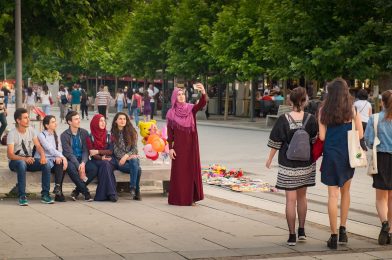Professional communicators understand the importance of getting the audience’s attention. A robust hook is necessary to stimulate their interest in the message, and a quote or a visual impact is an effective way to achieve that. However, when it comes to photography, a powerful image alone is not enough to convey a message. A photograph that lacks context can leave the viewer with little understanding of the subject and their story.
Wire service photographers have used impact as a visual hook for so long that it has become a norm. However, the context has been handed over to the writer, and we rarely see good examples of photos with real context. A good photograph should tell a story and provide context; the environmental portrait is an excellent example of achieving both. By showing the subject in their environment, the surroundings portray the person and help tell their story. A simple headshot only shows what someone looks like, but an environmental portrait can speak volumes about the person.

Missionary groups often show photographs lacking context, also known as “People Who Need the Lord” photos. They show what the people look like but tell us nothing about who they are, where they live, or what they do. Instead, photographs should be used as an introduction and tell a story. For example, showing a mother in her kitchen making a meal, a man at his job, or children playing can give context to the photographs and help the audience understand the subject and their story.
To bring context to a photograph, there are six simple steps to follow:
- First, determine the purpose of the picture.
- Decide on the mood of the photo.
- Determine the subject.
- Decide on what to include or exclude around the subject.
- Decide when to press the shutter to capture the moment.
- Decide on the light source to use.
Following these steps, photographers can contextualize their subjects and create photographs worth a thousand words. Photography can be used to tell a compelling story, and it is up to the photographer to ensure that the context is not lost in the visual impact.

